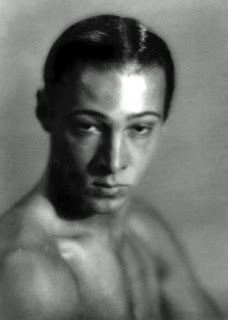It's been awhile since I've gone historical, so here are a few new ones for you that I have picked up!
In the early days of Hollywood, before movies had made it out west, the only real celebrities to gawk at were artists, writers, and politicians. As I referred to in a previous post, the first noteworthy personality to settle down in La La Land was the painter Paul de Longpre. The second would be author Frank L. Baum (left), whose children's stories about Oz had taken the nation by storm! Frank came to H-town in 1911, and he and his wife Maud bought a home on the corner of Cherokee and Yucca that they named "Ozcot." Frank would rise in the morning, work in the garden, and after lunch he'd get to work on his next book. The first one finished at 'Ozcot' was The Tik Tok Man of Oz. Little did Frank know that his novels would become the source of one of the greatest movies to ever come out of Hollywood! But The Wizard of Oz of 1939 was still a loooong way off. In fact, this masterpiece would not be the first time Baum's stories were immortalized. The earliest surviving version was made in 1910: The Wonderful Wizard of Oz. Because no records were kept at that time to authenticate its cast and crew, it is uncertain who took part in it, but Otis Turner is sometimes implicated as the director. Other Oz silents include: Dorothy and the Scarecrow in Oz, The Land of Oz, and John Dough and the Cherub of 1910, which are sadly considered lost, and The Patchwork Girl of Oz, The Magic Cloak of Oz, and His Majesty, the Scarecrow of Oz of 1914. The more familiar version came about in 1925 as The Wizard of Oz, directed by and starring the great, and too often forgotten, comedy legend Larry Semon as the Scarecrow, Oliver Hardy as the Tin Woodsman, and Dorothy Dwan as Dorothy! Who knew!?
Oliver, Dorothy, and Larry- Oh My!!!
Another noteworthy name around town at this time was that of Doctor Schloesser. Real estate remained the big business in the area at this time, and Schloesser was eager to try his hand at the booming market. He was hard to miss: pudgy with big, red lips, dressed in a whalebone girdle that made him creak when he walked, and usually adorned in a fancy frock coat and white gloves. He bought and sold different properties, making huge profits, and built the astounding "Glengary Castle" at the corner of Franklin and Argyle. The two marble lions decorating the entrance were especially impressive. The home was a mixed throw-back to medieval times, and its extravagance can be likened to a more diminutive San Simeon, (William Randolph Hearst's notorious abode). When movies began shooting out in California, Schloesser made some extra money by renting out his illustrious home to filmmakers who needed a set that looked deserving of a millionaire. By that time, the Doc had moved out... and across the street to a bigger castle, which he dubbed "Sans Souci." A true character and social anomaly, when he finally sold "Glengary," newspapers would write, "Hollywood has given up trying to understand Dr. Schloesser." Haha!
It was only a matter of time before filmmaking made its way out west, however its first appearance was modest. It wasn't until 1910 that the first movie theater opened in Hollywood, "The Idle Hour." It was located at Hollywood and Hudson, and it was little more than four wooden walls, a screen, and some benches. The second theater would open about three years later between Hollywood and McCadden: "The Hollywood Theater." In response to this competition, "The Idle Hour" revamped its appearance, recognizing that movies were indeed big business, and reopened anew as "The Iris." It got its floral name from the fact that it stood where De Longpre's lush garden was once located, as well as its obvious filmic reference. This theater was also notable for possessing the first "ornamental electric lighting." Lemon groves and pepper trees were quickly being cut down as new buildings and real-estate developments continued to crop up. Slowly but surely, movies were coming to Hollywood.
And now, the moment you've all been waiting for! The first official film made in Hollywood! No, no, it wasn't The Squaw Man, whose production I refer to here. That was the first "feature film," made in 1912. Ironically, many of Squaw's scenes were shot on the land that would later become home to the Forest Lawn Cemetery of the Hollywood hills. This land would help to give birth to film and in due time serve as a deathbed to some of its greatest stars, including Bette Davis, Charles Laughton, and Buster Keaton. However, the first movie was made two years earlier in 1910. It was a short, shot in one day, at-- once again-- De Longpre's garden. This little gem, Love Among the Roses, would prove to be prophetic, for it would be directed by and star two of the biggest names in Hollywood history: D.W. Griffith and Mary Pickford. The first major film celebs in the first Hollywood film??? At the time, they weren't quite so prestigious. DW was a struggling filmmaker in a society that didn't consider movies a grand profession, and little Mary was but 15-years-old. But times were changing, and these two were unwittingly paving the way to the future.
Mary, after she became Queen of the Movies
(Update: new research has revealed that D.W. Griffith's In Old California actually dates further back than Love Among the Roses, making it the first Hollywood film).
























